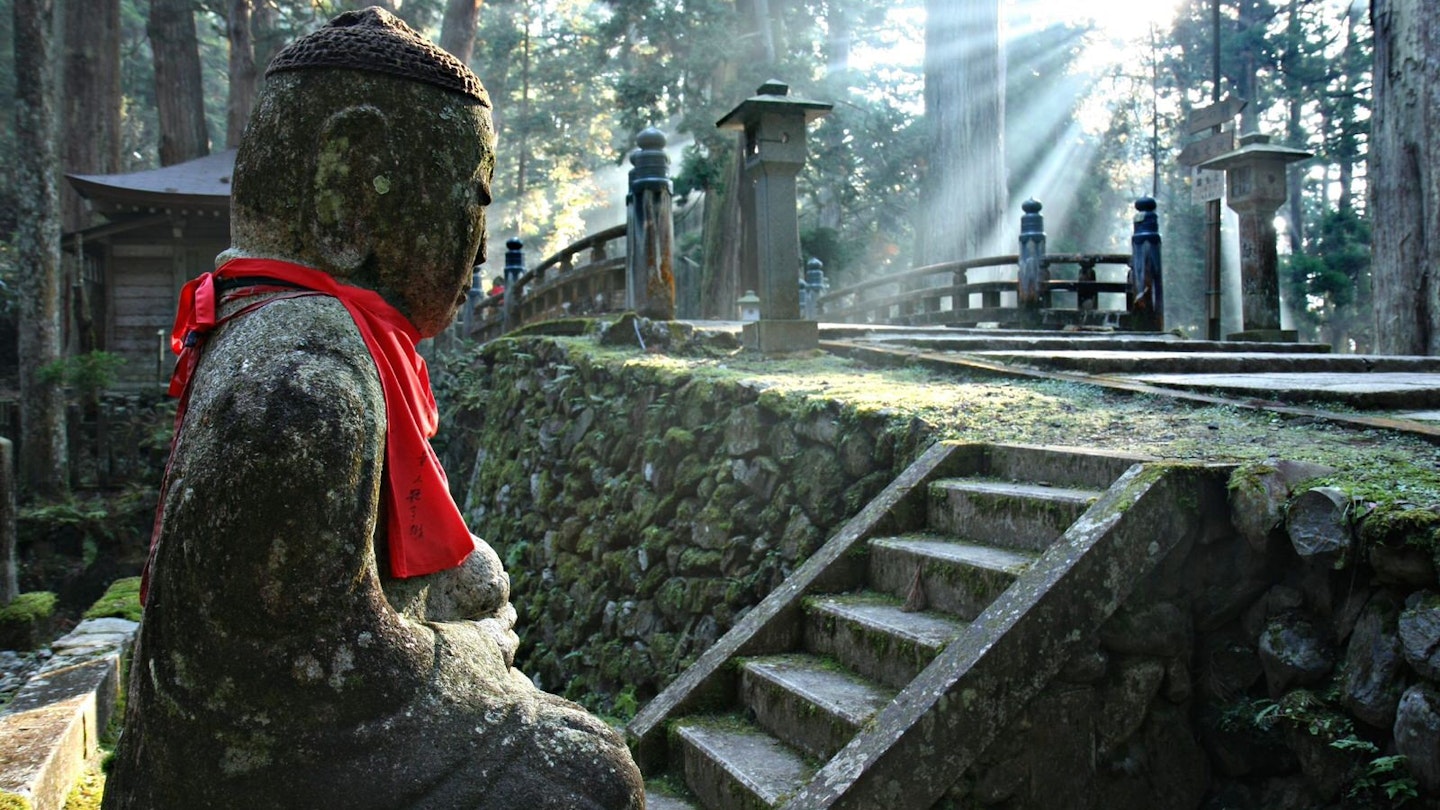You could cover a lot of ground on a trip to Japan, or very little, and still get to experience the best of what the country has to offer. Centrally located Kansai has it all: not just Kyoto, but also a vibrant city in Osaka, plus fantastic hiking and hot springs.
Kyoto’s Temples and Gardens
For over a millennium, most of what was considered ‘Japanese’ came from Kyoto, the country’s former (but longtime) capital. Kyoto stands out today for its temples and gardens, which are exquisite examples of centuries of Buddhist architecture and landscape design. Highlights include:
- The molten ‘Golden Pavilion’, Kinkaku-ji
- The unexpectedly austere ‘Silver Pavilion’, Ginkaku-ji
- The enigmatic rock garden at Ryōan-ji
Although these sights can get crowded, Kyoto has over a thousand temples, making it thrilling to find your own favorite amidst your wanderings.

Bright Lights, Big City in Osaka
Tokyo is an obvious choice for travelers eager to experience urban Japan in all its glowing neon glory. However, Osaka shines just as brightly and is well-known for its 24-hour eating and drinking culture, with a popular slogan: kuidaore – ‘eat ‘til you drop.’ Its compact center allows you to take in much within a short time, hopping from the food market Kuromon Ichiba to the lively commercial strip Dōtombori and onto the bars and clubs of Amerika-Mura. Be sure to taste Osaka’s famous dishes like tako-yaki (grilled octopus dumplings) and okonomiyaki (savory pancakes).
Early Buddhist Art and Architecture in Nara
Nara was Japan’s capital in the 8th century, just before Kyoto, and saw significant Buddhist influence. Grand temples, extraordinary for their time, were built using advanced technologies. Noteworthy remnants include:
- The historic Hōryū-ji temple, founded in the early 7th century, one of the oldest wooden structures in the world, located near Hōryū-ji.
- The 16m-tall Daibutsu (Great Buddha) at Tōdai-ji.
For a deeper understanding of this artistic period, the Nara National Museum is a must-visit.
Mountain Monastery Kōya-san
Among the most spiritual spots in Japan, Kōya-san is a vast monastery complex founded by the monk Kōbō Daishi, who has become a significant figure in Japanese religious culture. His crypt is deep in the woods where followers have continued to honor him. Kōya-san is home to around 50 temples, many of which offer lodging options. Staying in one, such as Ekō-in, allows for a peek into monastic life and the experience of shōjin-ryōri (Buddhist vegetarian cuisine).

Hiking the Kumano Kodō
The Kumano Kodō is a network of trails established by mountain ascetics over a thousand years ago in the Kii Peninsula of Kansai. At key points, shrines and temples were built amidst the striking natural scenery. Although it fell out of favor for a while, this ancient pilgrimage route has been rejuvenated, allowing hikers of all abilities to explore these time-honored trails.
Hot-Spring Hopping at Kinosaki Onsen
Kinosaki Onsen is Kansai’s most famous hot-spring resort, offering a fantastic introduction to Japanese bathing culture. It features seven public bathhouses and numerous traditional inns or ryokan, many providing their own baths. Guests receive yukata (light cotton kimono) and geta (traditional wooden sandals) to stroll to the bathhouses conveniently located along the town’s central canal. Kinosaki is a long-time favorite for foreign travelers, ensuring that the inns and bathhouses are welcoming and accommodating.

Top Tips for Visiting Kansai
- Kansai International Airport serves as the international entry point, though flying to Tokyo and transferring can be cheaper.
- Kyoto, Osaka, and Nara are closely connected by direct trains, making any city a convenient base for exploring the others.
- Kyoto deserves the most time on your Kansai itinerary; however, accommodations can fill up quickly and may be pricey. Nearby Ōtsu in Shiga Prefecture is a good alternative base.
- Kōya-san and the Kumano Kodō are located south of Kansai’s urban center in Wakayama Prefecture. While Osaka is the best transit hub, be aware of limited bus service between the two.
- Consider travel passes such as the Kansai Thru Pass or the Kansai Wide Area Pass to save money.





